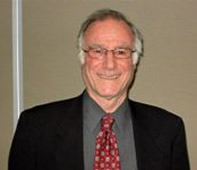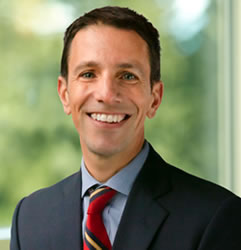Abstract
Torsional problems of the femur have been traditionally treated by a proximal osteotomy with internal fixation. We elected to perform femoral derotational osteotomies distally. Between September 1994 and April 2001, supracondylar osteotomies were performed on 38 femora in 21 children with torsional and angular deformities. The average age was 9 years (range 5-15 years). Twenty-three femora had excessive anteversion and fifteen, retroversion. All osteotomies were maintained by the small AO external fixator. Bony union occurred at an average of 10 weeks. Distal femoral osteotomy is an effective site for correcting rotational and associated angular deformities. The small AO external fixator provides precise adjustability, solid stability, and avoids a second procedure for hardware removal.
Introduction
Severe persistent femoral anteversion or retroversion presents both a functional and cosmetic problem. Surgical intervention is indicated in patients with severe anteversion without compensatory external tibial torsion that has not corrected by the age of 8 years [1]. Earlier intervention is warranted when the deformity interferes with normal gait. Correction is traditionally performed in the proximal femur using internal fixation to maintain the osteotomy [2]. This method requires significant exposure. A second procedure is subsequently needed for hardware removal.
We elected to perform corrective osteotomies of the femur distally. This location also permits concurrent correction of angular deformities, such as genu valgum.
Based on our experience with the small AO external fixator in other locations [3-7], this device would allow us to maintain an osteotomy with a rigid construct that is both precisely adjustable and light in weight. The exposure for the osteotomy is limited. In addition, the fixator and pins could be removed in the office setting, avoiding a second surgery. We therefore selected the small AO external fixator to maintain osteotomies in the distal femur.
Methods
Between September 1994 and April 2001, 21 children presented at our institution with torsional deformities in 38 femora. Twelve children in this group also presented with angular malalignment in 23 femora. The average age was 9 years (range 5-15 years). There were nine boys and 12 girls. Sixteen patients had idiopathic torsional problems, one child had lumbosacral agenesis, one spina bifida, one spastic hemiplegia, one Roberts syndrome, and one 47, XXY karyotype. All patients were ambulatory and presented with gait difficulties, limiting activities. None of these patients had ipsilateral hip dysplasia.
We measured lower limb rotational and angular deformities. The patient was examined in the supine position. Internal and external rotations of the feet and patellae were recorded to obtain both total foot and total femoral rotations. Angular deformities and flexion contractures of the knees were also measured. Tibial torsion was assessed by examining the intermalleolar angle with the patient sitting with the knees flexed at 90°. Knee range of motion was also recorded preoperatively. Gait was assessed clinically for functionai efficiency.
Twenty-three femora demonstrated excessive anteversion and 15 demonstrated significant retroversion. The femora that were excessively anteverted had an average of 50° more internal than external rotation of the patellae. The retroverted group averaged 50° more external rotation than internal rotation. None of these patients had compensatory tibial torsion. In addition, 18 femora were associated with genu valgum, and five with fixed knee flexion contractures. In each case, gait was directly affected by torsional malalignment of the femur.
After informed consent was obtained, supracondylar femoral osteotomy was performed. The patient was positioned supine with both lower extremities draped free with the anterior superior iliac spine exposed. Three 4.0mm end-threaded Schanz pins were placed laterally, 1cm above and paralle to the distal growth plate. Three similar pins were inserted more proximally in line with the femoral shaft. A sterile tourniquet placed around the upper thigh was inflated for the osteotomy only. A transverse osteotomy was performed through a limitcd lateral approach, close to the distal pins. Derotation of the femur was followed by angular correction , when required (Fig. 1). Each pin was linked to all others by clamps and carbon fiber rods (Fig. 2). Construct stability was achieved by three pin clusters proximally and distally, a minimum of three rods crossing the osteotomy site, and by interconnecting all pins within a cluster. Before final tightening of the cross-clamps, rotational correction was checked by examining the total foot and total femur rotations of the extremity and comparing them with the contralateral limb. Angular correction was checked and mechanical axis alignment was assessed from the center of the femoral head to the center of the ankle.
Postoperatively, pin sites were cleaned twice daily with a 50/50 solution of normal saline/hydrogen peroxide applied by a spray bottle. The pin sites were not manipulated. After 1 week, daily showering substituted for one daily pin care session. This protocol was taught to the patient's family before discharge. Half dose cephalosporin (cephalexin, 25 mg/kg, divided three times daily) was given orally while the pins were in situ. Physical therapy was started immediately. This protocol consisted of continuous passive motion of the knee, progress ing to active knee motion, and quadriceps and hamstring strengthening. The patient was in itia lly kcpt non-weightbearing.
Postoperative radiographs were taken in the office. Dynamization of the construct was performed when early callus was seen radiographically, usually at 4 weeks. This consisted of removal of one pin from each cluster and at least one carbon rod crossing the osteotomy site. Full weightbearing was then commenced.
Results
. . .Continue to read rest of article (PDF).
John E. (Jack) Handelsman, MD, FRCS, MCh Orth is Chief Emeritus of Pediatric Orthopaedic Surgery at the Children's Hospital of the North Shore/Long Island Jewish Medical Center and Chairman Emeritus of the Orthopaedic Department. With over 40 years of experience, he serves as a Clinical Professor of Orthopaedic Surgery and Pediatrics at the School of Medicine at Hofstra University, Hempstead, New York.
©Copyright - All Rights Reserved
DO NOT REPRODUCE WITHOUT WRITTEN PERMISSION BY AUTHOR.











